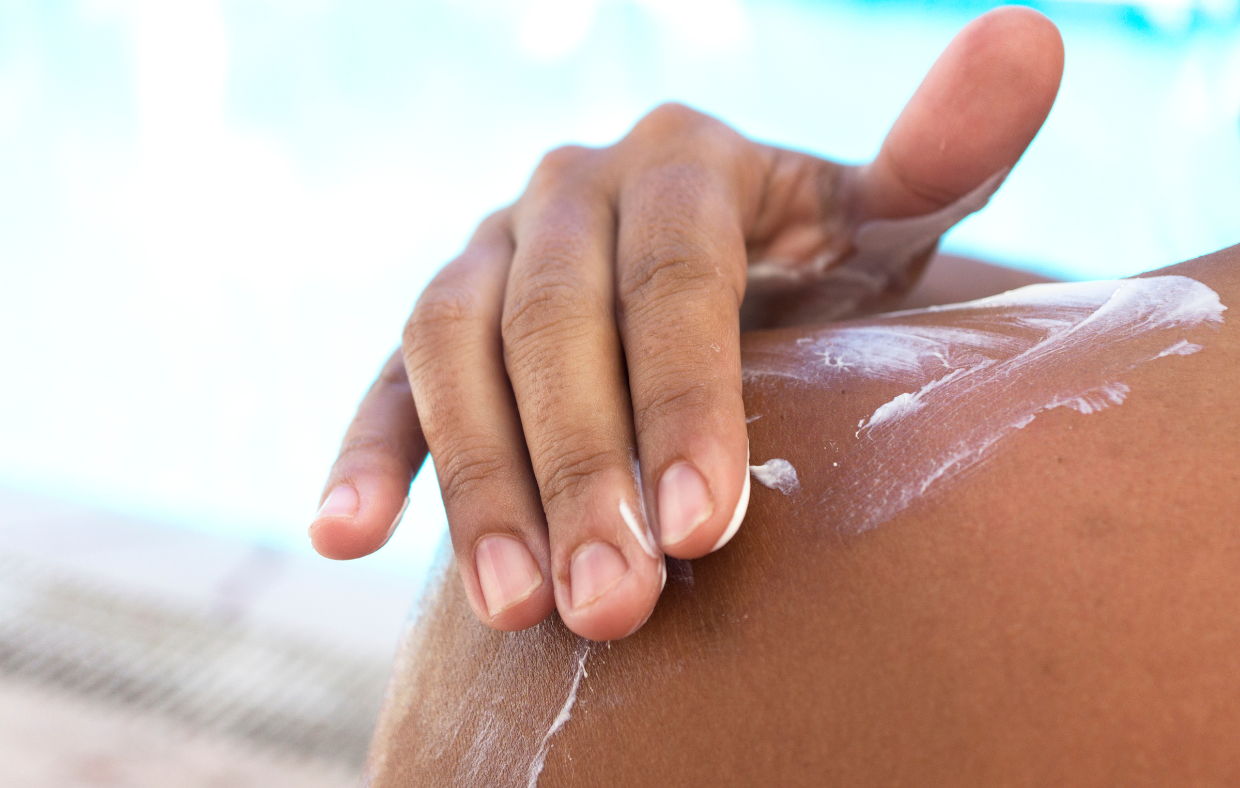It can feel wonderful spending time outdoors in the sunshine, but without adequate protection, the sun’s ultraviolet (UV) radiation can alter your cells and put you at risk for the most common cancer in the United States: skin cancer.
Every day, more than 9,500 people are diagnosed with skin cancer in this country. Every hour, at least two people die of the disease. However, by knowing the signs and symptoms, people can seek treatment early enough to dramatically increase their chances of a full recovery in most cases.
Skin cancer takes years to develop—in my case, more than 40 years after the sunburns of my youth. Back then, we knew that too much sun could cause premature aging, but we didn’t fully understand the direct link between UV rays and cancer the way we do today.
Skin cancer falls into three main types: basal cell carcinoma, squamous cell carcinoma, and melanoma. Basal cells are more common but less dangerous, and basal cell carcinoma doesn’t spread (but it does destroy the tissue under it). Squamous cells of the skin can spread, but they generally aren’t deadly.
Melanoma can spread and if left untreated, deadly. According to the American Cancer Society, almost 200,000 cases of melanoma will be diagnosed in 2022. Of those, almost half will be in situ (confined to the top layer of the skin), but the other half will be invasive, reaching the skin’s second layer, which makes them far more dangerous.
Detection
To identify melanoma and other skin cancer, follow the ABCDEs of detection.
- A is for Asymmetry. Regular moles are symmetrical. That is, if you broke them in half, both sides would be equal. Asymmetrical moles are cause for concern.
- B is for Borders. Regular moles have smooth edges and a perfectly round shape. Weirdly shaped lesions should be checked out.
- C is for Color. Normal moles usually have even color throughout. Melanomas tend to be dark in some areas and lighter in others.
- D is for Diameter. If your bump is bigger than a pencil eraser or a pea, get it checked out.
- E is for Evolving. If you have a mole that appears to be changing in size, color, thickness, or begins to itch or bleed, it’s time to see your medical provider.
Prevention
The best way to reduce your risk of skin cancer is to limit your time in the sun. We don’t need much direct UV exposure (about 30 minutes a week to produce vitamin D). If you’re going to be out in the sun, wear lightweight clothing that covers the skin, including a hat. These days, some specialty clothing has sun-blocking properties woven into the fabric.
Use sunscreen on any exposed skin. There are two major classes of sunscreen: chemical and mineral. Chemical sunscreen works by absorbing UV radiation using ingredients such as oxybenzone, avobenzone, octisalate, octocrylene, homosalate, and octinoxate (none of which pose any threat to your health). Chemical sunscreen is usually clear and leaves no residue on the skin. It also doesn’t need to be reapplied as often as mineral-based sunscreen (about every 90 minutes unless you’re in the water).
Mineral-based sunscreen works by acting as a shield to block sun (which is not as effective as UV absorption). Mineral sunscreens use ingredients such as zinc oxide or titanium dioxide, which tend to leave a white film.
Either way, choose protection that is at least 30 SPF or higher, and remember that even with sunscreen, sun damages skin, so find some shade if you can. If you must be in direct sun, don’t skimp on the sunscreen. For full body coverage, you should use about a shot-glass’s worth of sunscreen. If you do get burned, use a cool compress, moisturizer, and ibuprofen to reduce the pain.
Who is at Risk
Although people with light skin are at higher risk, anyone can get a sunburn and anyone can get skin cancer. To minimize your risk, limit your exposure to the sun and examine your skin for suspicious bumps.
Dr. Jerry Douglas is the chief medical officer at MCHC Health Centers—a local, non-profit, federally qualified health center offering medical, dental and behavioral health care to people in Lake and Mendocino Counties.

 MyChart Login
MyChart Login

